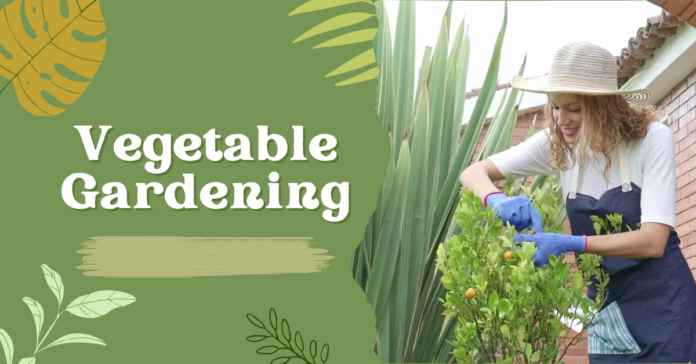Introduction
Gardening is a rewarding and relaxing hobby that allows you to connect with nature while growing beautiful plants, flowers, and even your own food. Whether you have a backyard, balcony, or small indoor space, this beginner’s guide will help you get started with essential gardening tips, tools, and techniques.
Choosing the Right Garden Type
Understanding Different Gardening Styles
Before you start, decide what type of garden suits your space and preferences:
- Container Gardening – Ideal for small spaces like balconies and patios.
- Raised Bed Gardening – Great for organized, efficient planting.
- Traditional In-Ground Gardening – Best for large outdoor areas with good soil.
- Indoor Gardening – Perfect for growing herbs and small plants indoors.
Selecting the Best Location
Consider these factors when choosing a gardening spot:
- Sunlight Exposure – Most plants need at least 6 hours of sunlight daily.
- Soil Quality – Well-draining, nutrient-rich soil is essential for healthy plants.
- Water Access – Make sure your garden is close to a water source.
Essential Gardening Tools and Supplies
Must-Have Gardening Tools
Invest in these basic tools to make gardening easier:
- Hand Trowel – For digging and planting small plants.
- Pruning Shears – To trim and maintain healthy plants.
- Garden Hoe – Helps in breaking up soil and removing weeds.
- Watering Can or Hose – Essential for keeping plants hydrated.
- Gardening Gloves – Protect your hands from dirt and thorns.
Soil and Fertilizer Essentials
Healthy soil is the foundation of a successful garden. Use:
- Compost – Improves soil texture and adds nutrients.
- Organic Fertilizers – Such as bone meal or fish emulsion.
- Mulch – Retains moisture and prevents weeds.
Choosing the Right Plants
Best Plants for Beginners
Start with easy-to-grow plants that require minimal maintenance:
- Vegetables – Tomatoes, lettuce, radishes, and carrots.
- Herbs – Basil, mint, rosemary, and thyme.
- Flowers – Marigolds, sunflowers, petunias, and zinnias.
Understanding Plant Care Requirements
Different plants have unique needs. Consider:
- Watering Needs – Some plants require more frequent watering than others.
- Soil Type – Some plants thrive in sandy soil, while others prefer loamy soil.
- Growth Time – Choose plants that match your patience level and available time.
Planting and Caring for Your Garden
Step-by-Step Planting Guide
Follow these simple steps to plant your garden:
- Prepare the Soil – Loosen soil and remove weeds.
- Plant Seeds or Seedlings – Follow spacing guidelines for each plant type.
- Water Properly – Keep the soil moist but avoid overwatering.
- Add Mulch – Helps retain moisture and prevent weeds.
- Monitor Growth – Regularly check plants for signs of pests or diseases.
Watering and Maintenance Tips
- Water in the Morning – Prevents evaporation and fungal diseases.
- Use a Soaker Hose – Ensures deep root watering.
- Trim Dead Leaves – Encourages new growth and prevents disease spread.
Dealing with Pests and Diseases
Common Garden Pests and How to Control Them
Watch out for these pests and use organic solutions to manage them:
- Aphids – Spray with soapy water or introduce ladybugs.
- Slugs and Snails – Use crushed eggshells or coffee grounds as barriers.
- Caterpillars – Handpick or use neem oil spray.
Preventing and Treating Plant Diseases
Keep your plants healthy with these tips:
- Rotate Crops – Prevents soil depletion and disease buildup.
- Avoid Overwatering – Reduces the risk of root rot and mold.
- Use Natural Remedies – Baking soda or copper-based sprays can treat fungal infections.
Harvesting and Enjoying Your Garden
Knowing When to Harvest
For vegetables and herbs, look for these signs:
- Vegetables – Harvest when they reach full size and color.
- Herbs – Pick leaves before the plant flowers for the best flavor.
- Flowers – Cut blooms early in the morning for longer-lasting arrangements.
Using Your Garden’s Produce
- Cook with Fresh Herbs and Vegetables – Enhance meals with homegrown ingredients.
- Create Flower Arrangements – Brighten up your home with fresh-cut flowers.
- Make Herbal Teas – Dry herbs like chamomile and mint for homemade teas.
Conclusion
Starting a garden is a fulfilling experience that brings joy, relaxation, and fresh produce. By choosing the right plants, using essential tools, and maintaining a regular care routine, you can grow a thriving garden. Begin your gardening journey today and enjoy the many benefits of growing your own plants!
For more gardening tips and beginner-friendly guides, visit Article Table.
Related Resources:
For additional gardening techniques and inspiration, check out Sunray Click.
